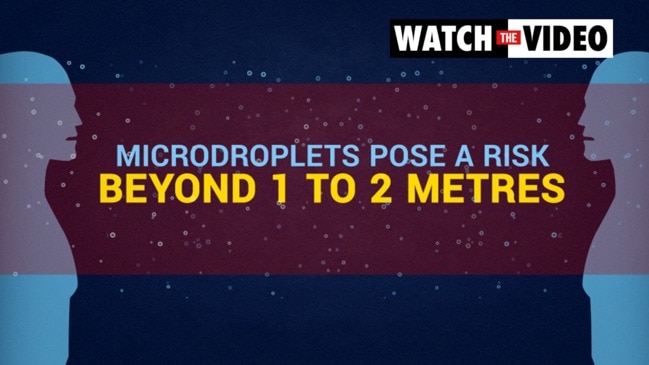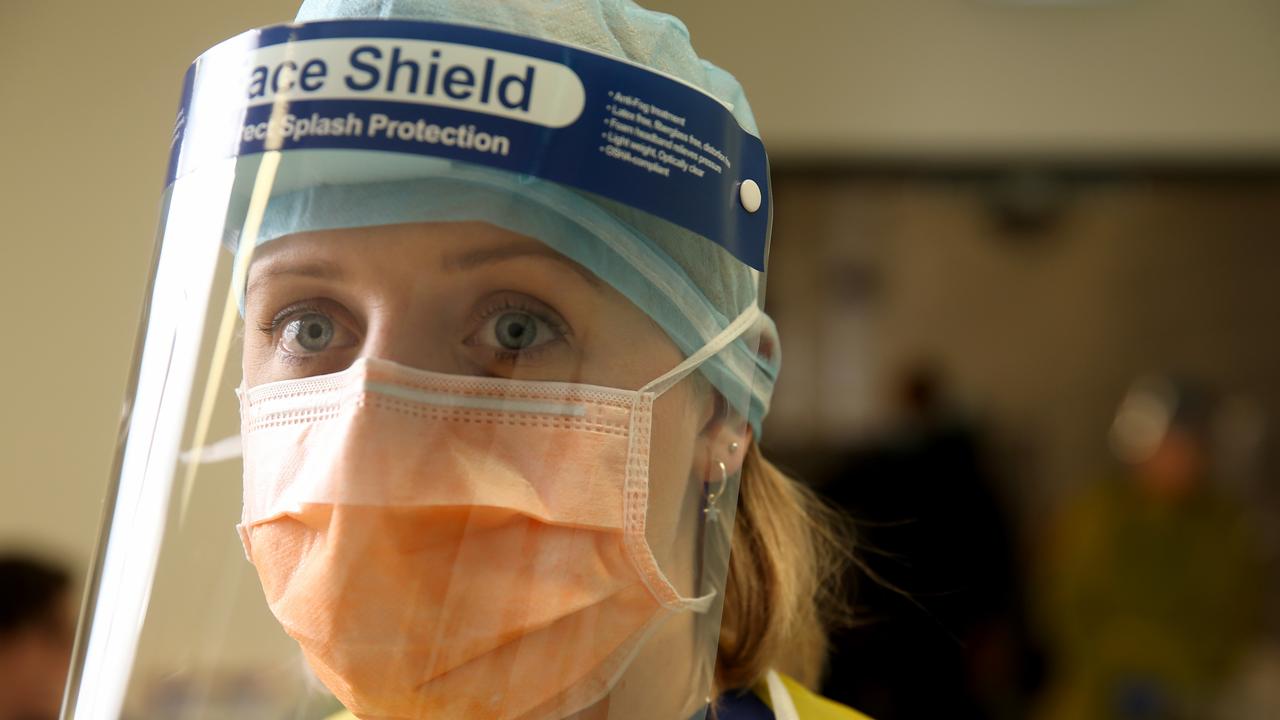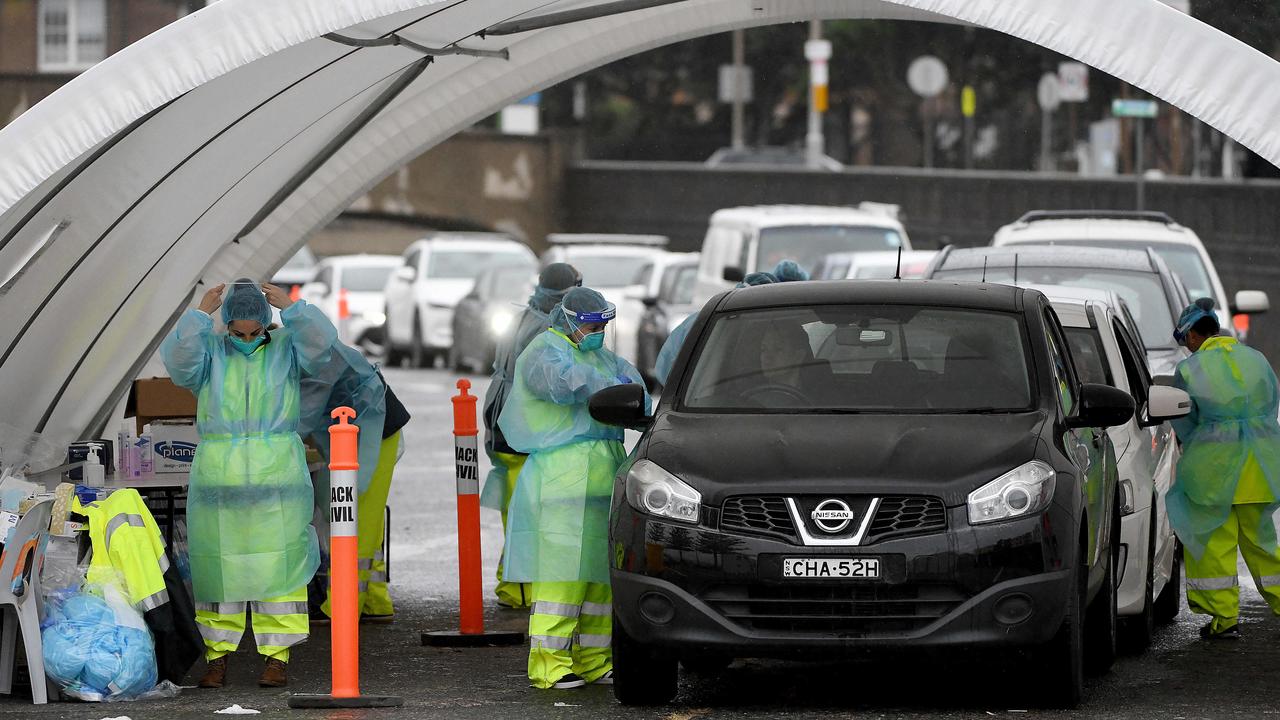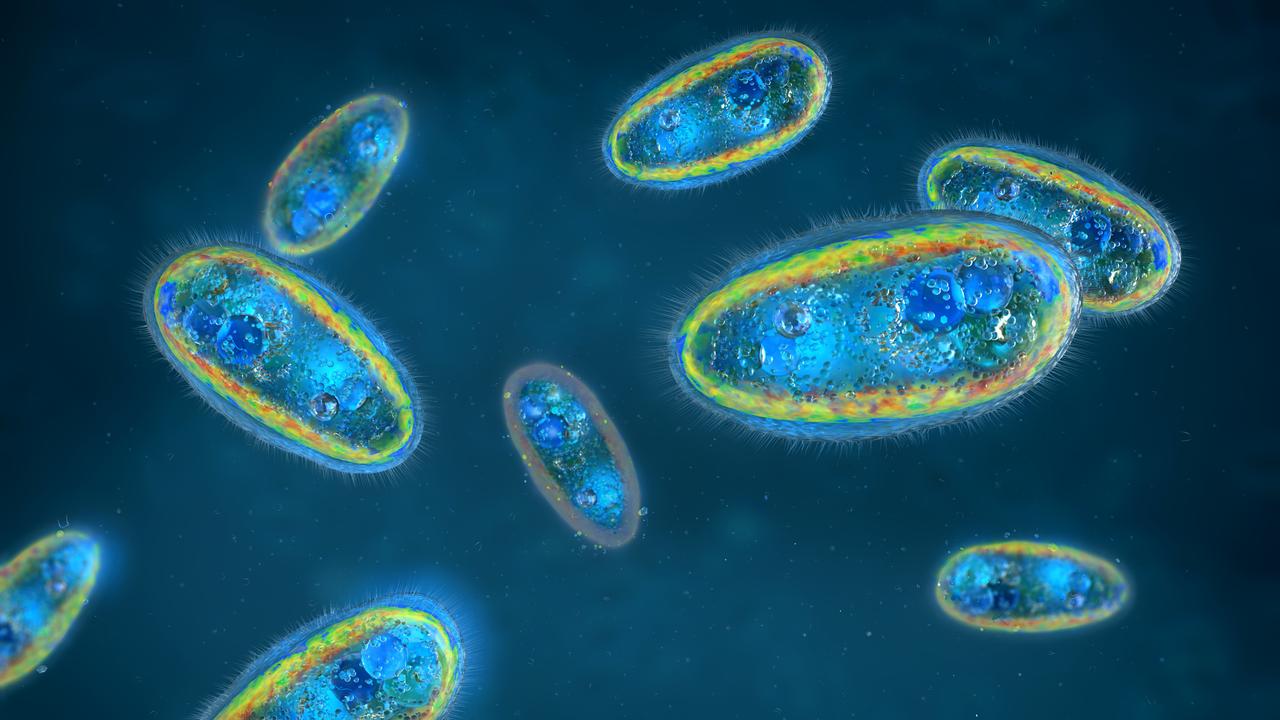Coronavirus spread: Tests reveal COVID-19 can spread through air
A new study has shown why COVID-19 is so wildly infectious and why scientists say it’s a “smoking gun” for healthcare workers.

It’s a pandemic’s worst-case scenario: a disease so contagious it quickly kills the doctors and nurses attempting to combat it.
COVID-19 isn’t that pandemic.
But it is persistently bypassing personal protection and facility containment measures to infect medical staff. That threatens the ability of medical services to treat the general public.
In Victoria alone, 1600 healthcare workers have already been infected. The cause remains unknown.
Simulations run after the SARS and Swine Flu scares repeatedly identified one overwhelmingly deadly characteristic: the ability of a virus to linger in the air.
Cough droplets rapidly settle on surfaces. But smaller particles – called aerosols – can be produced by merely talking. And these can stay aloft for hours.
The extent to which COVID-19 can do this has been a matter of intense debate and research.
It’s a new virus and while it belongs to a family of known viruses, the coronaviruses, it isn’t behaving as expected. Pinning down its unique properties is, therefore, an urgent matter of research.
RELATED: Woman gave 71 people virus in 60 seconds
RELATED: Follow our live coronavirus coverage

Now a new study has added evidence of a growing body of research indicating COVID-19 does what everybody fears most.
“If this isn’t a smoking gun, then I don’t know what is,” tweeted US aerosol scientist Linsey Marr.
‘SMOKING GUN’
There has been circumstantial evidence of the virus’ spread that can be most simply explained by transmission through the air.
But medicine, like most science, requires evidence that can stand up in a court of law.
In this case, that evidence must be carefully tested and recorded proof that tiny floating droplets of moisture can carry live colonies of COVID-19.
These droplets vary in size, ranging from the humidity of an exhaled breath to globules projected by a cough or sneeze.
It’s been evident since the outset that a cough can transmit the virus. That’s behind the physical distancing advice to keep 1.5 meters away from others.
But virologists have now found living virus lingering in hospital air.
“This is what people have been clamouring for,” Marr told the New York Times. “It’s unambiguous evidence that there is infectious virus in aerosols.”
RELATED: Virus silently spreading around Australia

The University of Florida study collected air samples from a Florida COVID-19 treatment ward. These were collected at distances of between 2m and 5m of an infected patient.
Such collection isn’t easy. The virus mustn’t be damaged. And conditions must match those of transmission.
Ultimately, the sampler had to simulate human inhalation.
The ward had its air completely recycled every 10 minutes, was fitted with medical-grade filters, ultraviolet lights and a multitude of protective screens surrounding the patients.
Researchers found a tiny amount: just 74 live virus particles for every litre of air sampled.
It’s not yet known if that is enough to infect somebody.
But the researchers believe it suggests the airborne virus can accumulate in more poorly ventilated spaces and rooms.
SUPERSPREAD THREAT
A 2018 simulation run by the John Hopkins Center for Health Security was designed to test how governments, agencies and medical organisations responded to a pandemic.
The main challenge? Identifying whether or not the virus was carried by coughs (best case) or aerosols (worse case) quick enough.
The hypothetical scenario pitted these people against a moderately contagious virus genetically engineered to go airborne. By the time the nature of this threat was identified, it was too late.
The virus had spread too far to be contained.
Under that simulation, 150 million people died within the first 12 months. The worst toll was among health workers.
The cause: ‘superspreader’ events where the virus could quickly travel to a multitude of new hosts. Those events become more significant and more deadly with the aerosol-carried disease.
COVID-19 has undoubtedly proved to be a ‘superspreader’.
Meat processing facilities. Weddings. Call centres. Nursing homes. Explosive growth in crowded, humid, poorly ventilated spaces has helped propel the virus across the globe.

Studies suggest that between 10 and 20 per cent of coronavirus sufferers may go on to seed 80 per cent of new infections. Other viruses, such as the flu, don’t behave this way.
Finding out why may be a key to containing the disease.
Seattle-based Fred Hutchinson Cancer Research Centre researchers have found ‘superspreading’ to be an unfortunate convergence of events.
It needs a sufferer at a point where they are shedding large amounts of virus.
It needs a setting with a lot of people available for the virus to infect.
It needs an environment which facilitates its movement.
For sufferers, they are most contagious for a period of one to two days in the second week of infection. Unfortunately, some people at this peak do not experience symptoms.
“Even for the flu, which we’ve studied for decades, we still don’t know how much is transmitted by aerosols or by touching contaminated objects,” Marr told National Geographic.
The extent to which COVID-19 remains airborne remains a matter of debate and study.
It’s not likely to be solved any time soon.
Jamie Seidel is a freelance writer | @JamieSeidel




